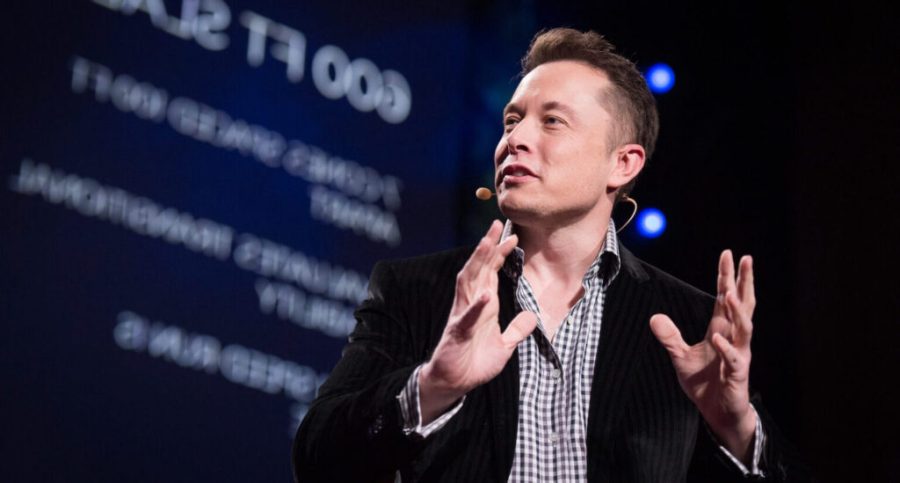Elon Musk buys Twitter, lays off thousands of employees
November 12, 2022
Tesla, PayPal and SpaceX founder Elon Musk bought Twitter on Oct. 27 for an estimated $44 billion after months of back-and-forth negotiation and even a lawsuit. After buying the app, Musk tweeted “The bird is freed” and fired many top executives, including the CEO, CFO, the head of legal policy and dissolved the board. Since buying Twitter, an estimated 3,700 employees have been laid off.
On the evening of Oct. 27, a company-wide email was sent out to notify employees that layoffs would begin the next day and to not come back to work. The email ended with “This action is unfortunately necessary to ensure the company’s success moving forward.” Employees were then logged out of Slack and their work computers. Some employees were temporarily able to use their email and other work apps but eventually lost access as well.
This was also the case in other headquarters around the world. In Dublin, Twitter employees woke up to an email about the job cuts, and in Tokyo, employees received the email at the end of their workday. In all of these cases, former employees were asked not to speak about their experience of working at Twitter. The next morning, only a few employees were able to get into the San Francisco office while at least nine security guards patrolled the premises outside.
Many top executives were also swiftly fired once Musk took over. Some notable names were the CEO Parag Agrawal, who assumed the position after co-founder and previous CEO Jack Dorsey stepped down; CFO Ned Segal; and head of public policy Vijaya Gadde. The firing of Gadde was especially notable because she was in charge of who got suspended and was known as “Twitter’s chief censor.” This move reinforced Musk’s stance on content moderation on the app. Other teams such as the human rights and disability, communications and IT teams were all cut back significantly. Former employees expressed concern for those who lost their jobs while on work visas or were pregnant and even offered to be laid off instead of them. Under the hashtag #LoveWhereYouWorked, many employees tracked news from colleagues, expressed their gratitude towards bosses and other coworkers and talked about the company culture they would miss.
On Nov. 4, Musk tweeted, “Twitter has had a massive drop in revenue, due to activist groups pressuring advertisers, even though nothing has changed with content moderation and we did everything we could to appease the activists,” in reference to the fact that advertisers, who make up 90 percent of Twitter’s revenue, have decided to pause activity based on fear of how Musk will change the platform. This pause accelerated after the mass layoffs.
Because of the buyout, civil rights organizations have warned that if the platform loosens content rules, it will lead to a rise in hate speech. Later on, Musk claimed that Twitter was losing $4 million a day in revenue. Musk is under immense pressure to make sure the app profits because of the $13 billion he borrowed for the buyout. Because Twitter is already losing money every day, Musk resorted to layoffs to fix the problem, convincing advertisers to stay and pushing Twitter’s subscription service Twitter Blue.
Before the buyout, Musk repeatedly tweeted about the lack of free speech on the platform. In response to advertisers questioning whether Twitter is the correct platform for their ads, Musk said he wants the app to become “a common digital town square where a wide range of beliefs can be debated in a healthy manner” but to avoid becoming a “free for all hellscape.” Musk has stated he wants to significantly reduce content moderation on the app by bringing back suspended accounts. Musk plans on reactivating former President Donald Trump’s account after it was suspended in response to the Jan. 6 Capitol insurrection.
In a tweet, Musk said that laid-off U.S. employees would be on the payroll for an additional two months before officially being terminated and that all laid-off workers would be offered three months of severance pay. Former employees can also request an additional month of severance if they choose to. The move to keep former employees on the payroll was seen by many as a way to get away with not giving employees advance notice before the layoffs began. Twitter has not sent out any new information about how to access severance, and many former employees speculate that the pay will still not be enough in comparison to former management.
Five former Twitter employees filed a class action lawsuit against Twitter on Nov. 4 for not giving them advance notice of the layoffs. Federal employment law and the state of California, the headquarters of Twitter, require companies to notify employees about layoffs 60 days before, as per the Worker Adjustment and Retraining Notification (WARN) act.
Since the layoffs, it has been reported by Bloomberg that dozens of staff members have been contacted by Twitter and told that they were let go “by mistake.” Over the weekend, employees received a message on Slack that read “sorry to @everybody on the weekend, but I wanted to pass along that we have the opportunity to ask folks that were left off if they will come back. I need to put together names and rationales by 4 p.m. PST Sunday.” The company is reported to be putting a list of names they want to rehire.














madeline • Feb 8, 2023 at 8:23 pm
oh we hate this man. and yes I speak for the pace student body when I say we. all the hater haters can cry bout it